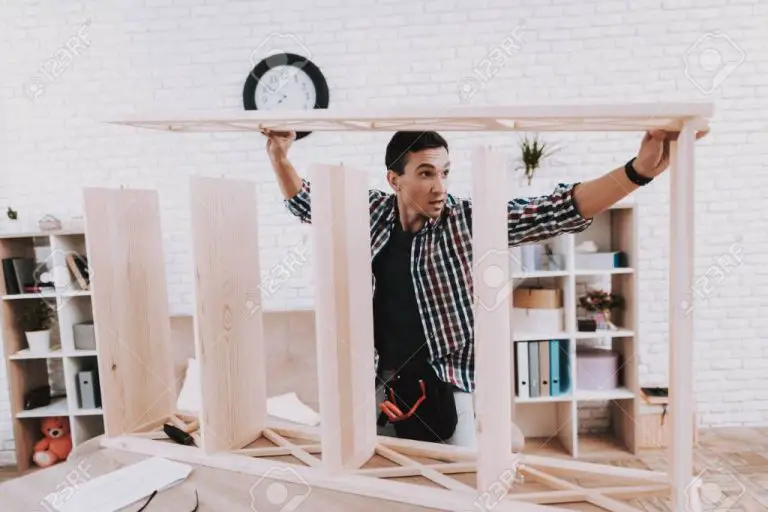Does Clay Mix Colors?
Clay is a versatile medium used by potters, sculptors, and ceramic artists worldwide. One of the great benefits of working with clay is the ability to mix and blend colors to achieve a wide spectrum of hues and effects. Manipulating clay colors is an essential skill for any ceramic artist looking to expand their creative palette.
The process of mixing clay bodies allows artists to customize the color of their clay to perfectly match their vision. While pre-mixed clays in basic colors are readily available, exploring custom color combinations opens up many more possibilities. Blending colors also enables subtle variations in tone and the ability to create color gradients within a piece.
Mixing colors with clay is a fun way to experiment and discover new shades that haven’t yet been imagined. It provides an opportunity for greater self-expression and allows artists to put their own stamp on their work. With an understanding of color theory and a willingness to explore, clay artists can create truly unique colors and effects in their pottery and sculpture.
Primary Clay Colors
The primary clay colors are red, yellow, and blue. These colors are considered primary because they cannot be created by mixing other colors together. When working with clay, having these three colors provides the foundation for mixing any other color.
Red clay contains iron oxide, giving it a rich, earthy hue. Reds range from a light salmon pink to a deep burgundy. Reds are bold and energetic. They evoke feelings of excitement, passion, and love.
Yellow clay gets its bright, cheerful color from compounds like limonite or sulfur. Yellows span from pale lemon to bright sunflower. Yellows are uplifting and optimistic. They give a feeling of happiness, intellect, and energy.
Blue clay contains cobalt or copper compounds. Blues vary from pale sky blue to midnight navy. Blues are tranquil and cooling. They evoke calmness, harmony, and spirituality.
Having these three primary colors in your clay palette allows you to mix virtually any other color. Start with quality primary clays in vibrant solid hues for the best color blending.
Secondary Clay Colors
Secondary colors are created by mixing two primary colors together in equal parts. The three secondary clay colors are green, orange, and purple.
Green is made by mixing blue and yellow clay in equal amounts. Adding more yellow will create a lighter, brighter green. Adding more blue will result in a deeper, forest green. Green is a cool, relaxing color that is versatile and pairs well with many other hues.
Orange is made by mixing red and yellow clay together. Adding more red makes the orange deeper and more intense. Adding more yellow creates a softer, peach-like orange. Orange is a fun, energetic color that evokes warmth, autumn, and creativity.
Purple is created by mixing red and blue clay. Adding more red makes a red-violet, while extra blue produces a blue-violet. Purple has regal, mystical connotations and can convey luxury, wisdom, and imagination.
Tertiary Clay Colors
Tertiary clay colors are made by mixing primary and secondary colors together in different ratios. For example, mixing blue (a primary) with green (a secondary made from yellow and blue) creates a tertiary color called blue-green. Other common tertiary clay colors include:
- Red-orange (mix of red and orange)
- Yellow-orange (mix of yellow and orange)
- Yellow-green (mix of yellow and green)
- Blue-green (mix of blue and green)
- Blue-violet (mix of blue and violet)
- Red-violet (mix of red and violet)
The exact hue of tertiary colors can vary greatly depending on the ratio of primary to secondary color used in the mix. Adding more of the primary will shift the tertiary closer to that primary color, while adding more secondary will shift it toward the secondary. Experimentation is key to achieving the perfect balance for your desired tertiary color.
Mixing Techniques
When working with clay, proper mixing techniques are essential for achieving the desired color results. Here are some of the main techniques to use when blending clay colors:
Kneading
Kneading is one of the most basic clay mixing techniques. It involves pressing, folding and wedging the clay to thoroughly incorporate two or more colors together. Kneading by hand allows you to feel when the colors have been fully blended. The more you knead, the more uniform the color will become.
Blending
Blending refers to gently massaging two contrasting colors of clay together, creating stripes and swirls. This technique provides a marbleized look. Start with a clay base color and add small pieces of a contrasting color on top. Fold the clay over itself and continue folding and pressing to blend, being careful not to over-mix.
Marbling
For more control over the patterns, try clay marbling. Roll each color out into a slab, stack them, then roll up together like a jelly roll. Gently press and twist the roll tocreate the marbled design. The more you manipulate the clay, the more the colors will blend together into new shades.
Using the right mixing approach is key to producing the clay colors you envision. With proper kneading, blending and marbling techniques, you can create stunning visual effects in your clay art.
Achieving Consistency
When mixing clay colors, it’s crucial to achieve a consistent moisture level and texture in order for the colors to blend properly. If one clay color is significantly wetter or drier than the others, it can lead to streaking, uneven mixing, and other issues down the line. There are a few key tips for achieving consistent moisture and texture:
- Start with clay bodies that have been wedged to a similar stiffness. If some clays are right out of the bag and others have been sitting around, they may have different moisture levels.
- Add small amounts of water or let clay sit out to even out moisture levels. Don’t over-wet or over-dry the clay.
- Knead and wedge clay thoroughly before mixing colors. This helps distribute moisture evenly throughout the clay.
- When kneading mixed colors together, focus on evening out the texture until no streaks can be seen.
- Avoid adding too many liquid additives like slips or oxides all at once when mixing.
- Check for consistency across the entire mixed clay body. Adjust moisture if needed before using.
Taking the time to achieve uniform moisture content and texture will provide the best results when blending clay colors.
Common Color Mixes
Some of the most common and useful clay color mixes include:
Browns
Browns can be mixed by combining complementary colors like orange and blue or red and green. Adding a small amount of black or white clay can also produce brown tones. Soft browns with a reddish undertone can be made by mixing red, yellow and white clays. For cooler dark browns, try mixing blue, black and just a touch of white.
Skin Tones
Achieving realistic skin tones with clay requires mixing colors like red, yellow, white, brown and small amounts of blue and green. Start with a base of white clay and add red, yellow and brown to match basic skin undertones. Add a tiny bit of blue to the highlight areas and green to the shadows for added realism. The precise ratios will vary depending on the skin tone you want to portray.
Neutrals
Neutral clay colors like beiges, creams and greys can add subtlety to a sculpture. Mix white clay with small amounts of darker colors like brown, red or blue to create beiges and creams. Adding black, white and a primary color yields neutral greys. Keep the darker color proportions minimal for soft, understated neutrals.
Special Effects
Beyond simply mixing colors, clays can also be used to achieve beautiful and intriguing special effects. Three of the most popular are mottled, swirled, and speckled clays.
Mottled clay involves gently folding or kneading two or more colors of clay together, resulting in subtle streaks and an organic marbled look. Less mixing leads to more defined streaks and veins.
Swirled clay takes mottling a step further, with very minimal mixing that creates swirling patterns when sliced. The colors remain distinct rather than blending together.
Speckled clay uses small flecks and dots of one color sprinkled throughout a base clay color. The speckles can be tiny or large, sparse or dense, depending on the effect desired.
Experimenting with these special effects opens up many options for creating visually striking ceramic pieces. The colors and patterns achievable are virtually endless.
Firing Considerations
The final temperature of firing clay affects how a mixture of colors will appear. Lower-temperature firings, like earthenware and mid-range stoneware, tend to retain brighter versions of the original clay colors. However, at higher temperatures like cone 6 and above for stoneware or porcelain, most colors start to burn out and get more muted.
Reds and oranges especially get more earthy at higher temps. Blues may turn gray, and bright saturated colors often tone down and blend together more. Keeping a kiln log of color results at different temperatures can help predict how a color mix may turn out after firing.
Certain minerals that provide coloring in clays, like copper and cobalt, become more vibrant at higher temperatures. So while many colors fade, a few may intensify when fired hotter. Testing how a particular clay body and color mix responds to increased temperatures takes experimentation.
The atmosphere inside the kiln also affects end results. Oxidation provides the truest colors, while reduction firing in an oxygen-deprived environment can dramatically alter a color mix, even creating new colors like copper red or blue-green celadons.
Conclusion
Clay color mixing allows for great creativity and artistic expression. As we’ve covered, there are primary, secondary, and tertiary clay colors that can be blended in various ratios to achieve desired hues. With the right mixing techniques and achieving proper consistency, clay artists can create an endless spectrum of colors for their projects. Key takeaways include:
- Primary clay colors are red, yellow and blue. Combining these allows artists to create secondary and tertiary colors.
- Secondary colors are orange, green and purple. They are made by mixing two primary colors.
- Tertiary colors are created by mixing a primary and secondary color. These include red-orange, yellow-orange, yellow-green, blue-green, blue-purple, and red-purple.
- Incorporating white, black, or gray clays modulates and softens color intensity.
- Achieving proper consistency is crucial for color blending. Adding water or slip helps thin and integrate colors.
- Special techniques like marbling can yield stunning visual effects.
With a grasp of color theory and practice, clay artists can mix and match a diverse palette that fuels their creativity for any project. The possibilities are endless!



